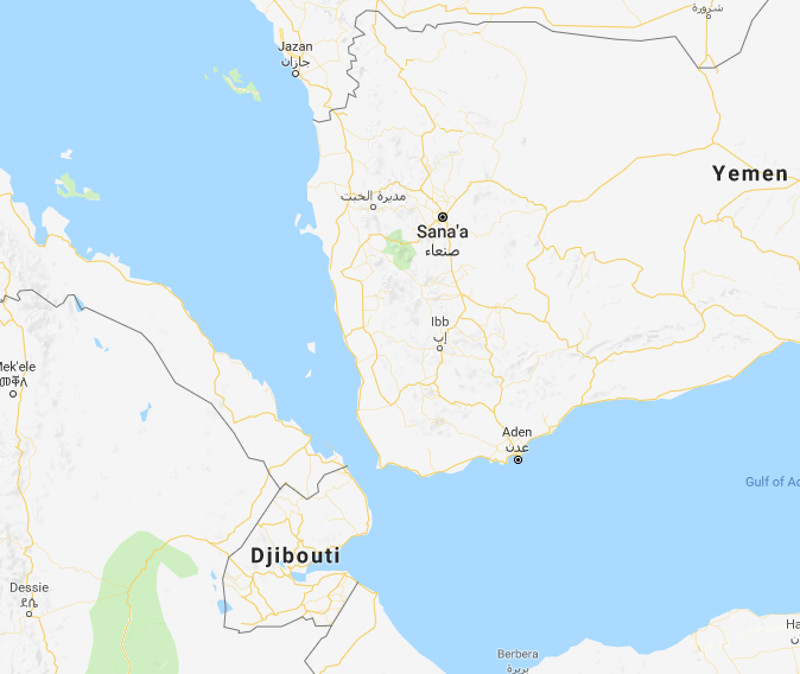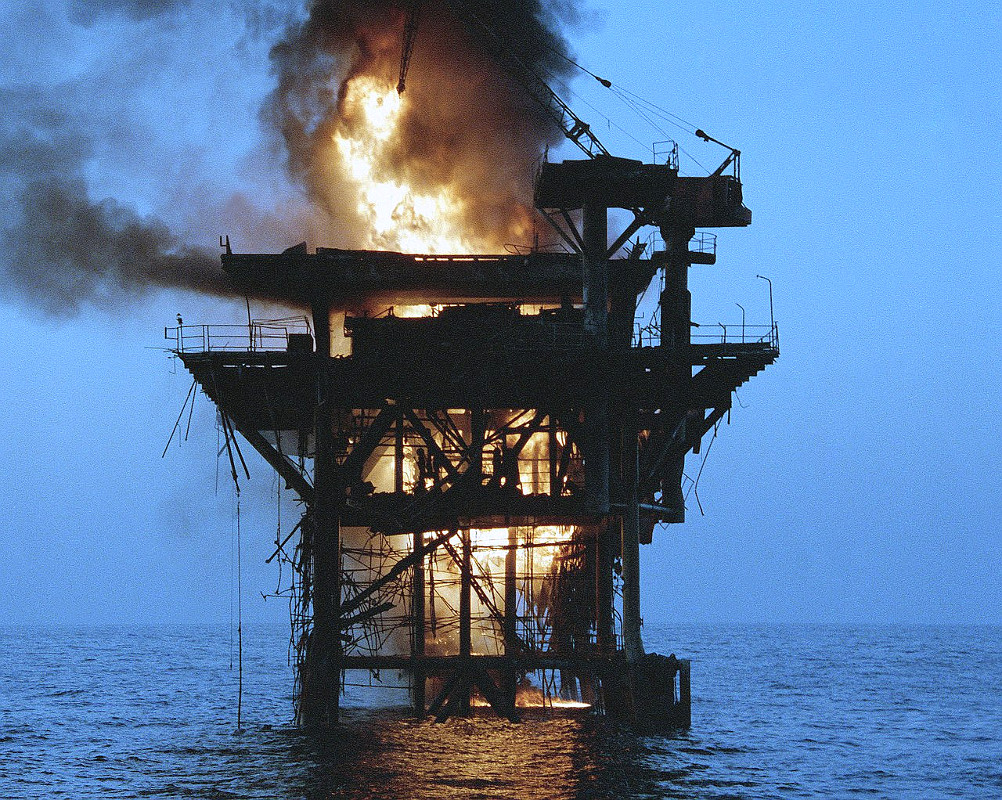Iran’s Islamic Revolutionary Guard Corps, or IRGC, is reportedly preparing for a major naval exercise involving dozens of small boats to demonstrate its ability to close off the highly strategic Strait of Hormuz, which separates the Persian Gulf from the Gulf of Oman, to international shipping with mines and other hazards. The snap drill follows a new surge in tensions between the United States and Iran and comes amid efforts on the part of Iranian-backed Houthi rebels in Yemen to block the equally vital Bab Al Mandeb Strait linking the Red Sea with the Gulf of Aden.
Reports of the impending exercise first began to emerge on Aug. 1, 2018. Though the drill in of itself is not unusual, the timing is, with the annual event typically occurring later in the year. There are also indications from various outlets, including Fox and CNN, citing unnamed sources, that this year’s iteration will be larger than normal, featuring over 100 watercraft of various descriptions.
“We will make the enemy understand that either everyone can use the Strait of Hormuz or no one,” the IRGC’s commander Major General Mohammad Ali Jafari said on July 5, 2018. The powerful quasi-military organization has hundreds of small boats and semi-submersibles and often works with the regular Iranian Navy’s midget submarines. Any of these boats could lay mines and otherwise harass both civilian maritime activities and foreign military operations in and around the Strait.
“The Americans have claimed they want to completely stop Iran’s oil exports,” Iranian President Hassan Rouhani also said in July 2018 before making what could be considered to be his own veiled threat. “They don’t understand the meaning of this statement because it has no meaning for Iranian oil not to be exported while the region’s oil is exported.”

Rouhani made those comments while in Switzerland trying to maintain support for the international deal over his country’s controversial nuclear program. In May 2018, the U.S. President Donald Trump and his administration withdrew the United States from the agreement and pledged to re-enact various sanctions against Iran, including efforts to block its oil exports.
Subsequent comments from Rouhani prompted a fiery tirade from Trump on Twitter. The U.S. military has made it clear that it, along with its regional partners, will take steps necessary to keep the Strait open in the event Iran decides to follow through on its threats.
“We are aware of the increase in Iranian naval operations within the Arabian Gulf, Strait of Hormuz, and Gulf of Oman,” Captain William Urban, the chief spokesman for U.S. Central Command, which oversees all American operations in the region, told CNN on Aug. 1, 2018. “We are monitoring it closely, and will continue to work with our partners to ensure freedom of navigation and free flow of commerce in international waterways.”
Iran has threatened to close the Strait of Hormuz repeatedly in the past and the threat is well understood at this point. In January 2018, the IRGC held another exercise in the region that also coincided with heightened rhetoric between Iranian officials and their U.S. counterparts. Over the years, the U.S. military has positioned various mine hunting and sweeping assets in the region, including one of its new Expeditionary Sea Base the USS Lewis B. Puller, and has been working with its allies to mitigate the impact of any potential incident as a result of these standing threats.
But these latest drills continue to demonstrate just how quickly Iran could decide to act upon these threats if it decided to and how hard it might be to respond quickly enough to prevent them from laying hundreds of mines or otherwise making the Strait unnavigable. Even if no further fighting erupted, clearing the mines could take weeks or months.

With approximately 20 percent of the world’s oil exports heading to their destinations via the Strait of Hormuz, if it were to end up closed for any appreciable amount of time it could have serious global economic repercussions. The waterway also serves as a pathway for nearly 90 percent of the region’s overall energy exports, including natural gas, which could make it particularly devastating for Iran’s regional opponents such as Saudi Arabia and the United Arab Emirates. And this is exactly the point from Iran’s perspective.
More worrisome, Iran may be in the process of something of a “dry run” in the Bab Al Mandeb Strait on the other side of the Arabian Peninsula or is otherwise using that zone to explore just what it can do directly and indirectly to impede international maritime traffic. On July 26, 2018, Saudi Arabia announced it had halted oil shipments through that equally constrained waterway after a pair of attacks on its oil tankers, which Houthi rebels in Yemen claimed responsibility for afterward.

The raiders damaged one ship, the Arsan, but caused no casualties. This is not the first time the Houthis have targeted commercial shipping, either.
Still, these latest attacks do represent a significant escalation in the Iranian-backed fighters push to attack Saudi economic interests, as well as naval vessels belonging to that country and its allies. It can be hard to verify the exact nature
of Houthi attacks in the area and it is possible there have been other, unreported attacks, as well.
Subsequent reports suggested an Iranian-flagged cargo ship might also be actively supporting the Houthi naval activities, but it is also possible that this ship, the M/V Saviz, has been helping smuggle weapons to the group or otherwise gathering intelligence on their behalf. The Saudi Arabian-led coalition has been engrossed in a grueling and controversial fight with the Yemeni faction since 2015. The United States has been supporting these operations and has found itself drawn into the conflict
Iran has supplied the insurgents with a variety of weapons and provided additional support to aid their own local production. The United States and other countries have provided evidence that the two parties are actively cooperating on suicide drones, remote-control explosive-laden boats, improvised naval mines, surface-to-air missiles, and ballistic missiles.
An asymmetric Iranian or Iranian-backed “blockade” of both the Strait of Hormuz and the Bab Al Mandeb Strait simultaneously would represent something of a nightmare scenario for the United States and its partners in the region. It’s a situation we at The War Zone have been warning about for years, too.
Naval countermine operations are complicated and dangerous to begin with and its easy to see how this kind of hostile action could quickly escalate into a larger skirmish. Even if the parties manage to avoid an immediate, larger conflict over the issue, American and other forces sweeping the hazards away would face the ever-present threat of Iranian small boat swarms, shore-based anti-ship cruise missiles, and ballistic missiles that could be carrying weapons of mass destruction, among other dangers. This would be something U.S. commanders would have to take into account and could slow down operations.
The video below shows scenes from the IRGC’s “Great Prophet IX” exercise in 2015, which involved simulated swarming boat attacks and anti-ship missile strikes on a mock aircraft carrier.

And there is a definite possibility of a larger conflict, especially if Iran or its allies were to step up their activities in the Bab Al Mandeb Strait, which handles all sorts of international shipping. On July 27, 2018, CNN reported, citing unnamed U.S. officials, that there were discussions about potential military options to the increasing Houthi attacks between the Red Sea and the Gulf of Aden.
The suggestion was that the U.S. military could extend its support for the Saudi-led coalition into the maritime domain, potentially helping provide intelligence information on rebel naval activities, which could then lead to air or other strikes. The officials stressed that, in keeping with the current American policy regarding the conflict in Yemen, the United States would not be engaged in direct action against the Houthis.
Given the international nature of the Strait, it is possible that the United States and the Saudis could build a maritime coalition of sorts to protect commercial shipping, similar to the multi-national forces the U.S. government and its allies set up to fight piracy off the coast of Somalia. Israel, for one, has already threatened to respond if the situation there becomes any more dangerous as part of such a notional force.

“If Iran will try to block the straits of Bab al-Mandeb, I am certain that it will find itself confronting an international coalition that will be determined to prevent this, and this coalition will also include all of Israel’s military branches,” Israel’s Prime Minister Benjamin Netanyahu said on Aug. 1, 2018. He also alluded to direct threats from either Iran or the Houthis toward Israeli shipping, but gave no specific details.
Netanyahu and his administration have repeatedly stated their intent to block Iran’s ability to expand its influence in the Middle East and Beyond, by military force if necessary. Israel has been particularly active in this regard in Syria, conducting regular strikes against Iranian interests.
It’s worth noting, as well, that, between 1987 and 1988, the United States conducted an extended military campaign against Iranian naval assets to protect its own maritime commercial interests during the Tanker War side-show to the Iran-Iraq War. However, this was a relatively low-level affair on both sides and doesn’t necessarily reflect what might occur if the United State and Iran were to find themselves in the midst of a larger, more sustained fight.

Iran’s military was also heavily focused on its brutal war with Iraq at the time. In any new conflict over the Strait of Hormuz, the Iranians might be able to commit many more resources into challenging the Americans and their allies.
Iranian authorities might also be less inclined to back down, even in the face of sanctions or punitive military actions. Iran’s president Rouhani, a political moderate by Iran’s standards, has increasingly found himself embattled at home over a number of different policies and could see a conflict of any kind with the United States or the country’s regional rivals as a way to distract from domestic issues or win over the support of more hard-line elements in the country. His rhetoric in Switzerland in July 2018 seemed more in line with his country’s most conservative elements than his statements had been in the past.
The region is definitely no stranger to complex, intertwined political disputes in general. Saudi Arabia and a number of its allies have been engaged in a notably protracted diplomatic spat with Qatar, which juts out into the Persian Gulf, over that country’s ties with Iran, which could make forming a unified front against Iranian maritime actions more difficult.

There are also increasing concerns that Trump and his administration might decide to take military action against Iran’s nuclear infrastructure preemptively, which could touch off a larger conflict, as well. The upcoming exercise will also demonstrate Iran’s ability to close off the Strait of Hormuz and potentially the Bab Al Mandeb straight in retaliation for any such strike. Of course, Iran has a variety of options at its disposal if it finds itself in an all-out war against the United States, including ballistic missile barrages against countries in the region, enabling proxies to conduct spectacular acts of terrorism, or even widespread cyber attacks.
It’s not clear, though, if Iran’s latest threats will turn out to be anything more than bluster, as they have in the past. For all the talk of how closing the Strait of Hormuz could hurt the Saudis or other Arab oil and gas producers, Iran’s oil heads out to the world the same way and despite American efforts to curtail these exports, other countries are still buying it.
And Iran would almost certainly face widespread international condemnation for attacking civilian shipping in international waters, an act that would violate any number of international agreements and basic norms. This seems incongruous with the country’s present effort to try and work with partners in Europe and elsewhere to try and paint the United States as solely responsible for the possible complete collapse of the Iran Deal and lessen the impact of any unilateral American sanctions.

It would also feed into domestic discontent in Iran over the country’s adventurism. Some critics and protesters have already called out the regime in Tehran over its costly support for Syrian dictator Bashar Al Assad and other regional proxies, such as the Houthis and the Lebanese militant group Hezbollah, rather than focusing those resources at home.
There are similarly very real questions about whether the IRGC can effectively mount any sort of large-scale operation when it is itself so heavily engaged and has suffered significant losses in Syria, Yemen, and elsewhere. It has also come under pressure from Rouhani in the past as the Iranian president has tried to curtail the group’s parallel authority. This could help explain the sudden decrease in instances where Iranian boats have harassed American naval vessels in the Persian Gulf and the uptick in the use of drones, which require less manpower, to do the same.
On July 31, 2018, U.S. President Trump did offer to meet with Rouhani and other Iranian officials without preconditions, which has created the potential for even more diplomatic wrangling, even though the Iranian president rejected the offer and senior American officials walked back the idea almost immediately. Of course, Rouhani’s quick dismissal of the offer could also be a signal that he feels he has too little domestic political capital to spend on negotiations with the United States or room back down from his hardline position, or simply that he no interest in doing so at present.
But none of this changes the fact that the Iranians continue to present very real threats to normal maritime operations in the Strait of Hormuz and the Bab Al Mandeb Strait. The up-coming IRGC exercise seems determined to prove that it can still do so at will, regardless of any attempts by Rouhani to engage with the United States or other members of the international community to reduce tensions.
Contact the author: jtrevithickpr@gmail.com
